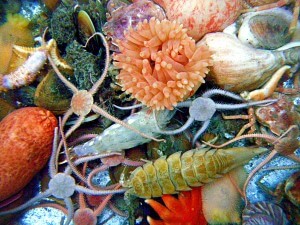
USCGC Healy
Photo by Karen Frey

Northern Ckukchi Sea biota
Photo by Steve Crawford

Deployment of UAF Mooring
Photo by Ken Dunton

ODU team with Box Core
Photo by Ken Dunton

Preparing to deploy HAPS Corer
Photo by Ken Dunton

Sorting biota on sluice box
Photo by Carolyn Blackwood
